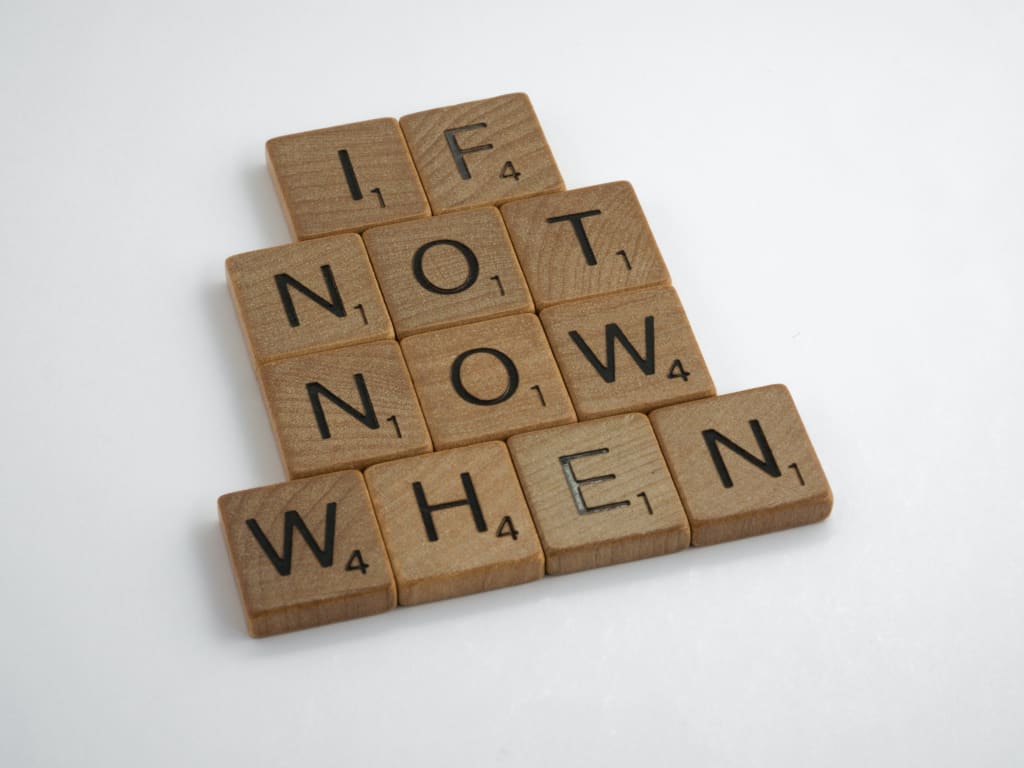How to Stop Procrastinating and Start Writing
It Changed My Life...to continue...

Have you been trying to get serious about writing but can't seem to get your head into gear and start typing?
In the beginning, it seemed like I was having a face-off with the word processor and switching off. At the time, writing wasn't going to change my life drastically as I was working full-time in the wealth management industry and the evenings trying to kick-start part-time a writing career on the side. I first thought that I was tired due to working long days, but it wasn't that. I was full of energy in the evenings and wanted to make more money. The day I decided that I wanted to earn extra money, I remember coming home, and that 6.30 pm, I opened my laptop, shut any form of social media and opened a word processor, and just started a white screen. I couldn't start!
I decided to research the issue as to why I could write a drafted title but couldn't follow on with the main content. Google brought up many websites about procrastination and something that many writers refer to as writer's block. I opened three different articles related to both writers' block and how many writers must procrastinating.
I took away from reading stories about other writers going through this situation because I wasn't alone. It is the norm! What I mean by that is the fact all writers will experience within their writing journey. I find writing not the easiest thing to do. Our brains are working overtime to try to think what to say without coming across stupid.
I started to feel guilty about procrastinating - especially when in my head I know what I wanted to say and write, but on the empty word document, I could only write a title or just words with it leading to know where.
Thankfully, I found a few more articles on how to tackle this problem and overcome the issue. I realized that there are many tools and techniques that writers can use to ignite my thoughts, become productive, and spend less time whining about how to start.
I want to share with you four tips and techniques that I used right away and hit the ground running.
1. Distractions
I mentioned above that I cut off all forms of social media by logging out of them. Now I am not saying you have to do this, but I often overuse both Linkedin and Twitter, and if I see a notification, I'll easily be distracted.
2. Use the Pomodoro technique.
A university student named Francesco Cirillo struggled with his studies and assignments and started to use a timer and broke down his work into smaller increments, traditionally between 20-25 minutes, separated by short breaks for 10-15 minutes, resetting his timer for the next interval.
It is essential to have in mind for any sets of intervals you want to do as well. For example, you could do six intervals, separated by 10 minutes break. And when I say a break, I mean coming away from any form of technology and do nothing! I mean, you can get a drink, fresh air, don't touch technology until that break is over. Why do I say this?
Again, you could quickly get distracted, and you could miss your next interval period. The best way I use this technique is to use an app on the phone. I have an iPhone and decided to download an app specific to this technique. Many apps on the phone can help. One I chose was called 'Focus Keeper.' It allows you to set a timer very easily and alerts you when the time is up.
3. Cap your attention span
When I first started to write blog posts and articles, I set a cap on the number of words I wrote. I started only writing up to 500 words per article. I found myself much more comfortable writing and trying to stay consistent without going into overdrive and going back to the situation where I start procrastinating and stop completely. Once I was comfortable writing 500 words, I then increased the number of words up to 600 words, and I did this every month until I was comfortably able to write up to 1500 words. I don't always write about keeping blog posts between 500-800 words and articles 800-1500 words. Still to this day, I follow these caps unless a client explicitly wants a much longer piece, known as 'long-form content.'
4. Have a structure of your blog post
A simple system could be the following:
1. Headline - Try to grab readers' attention. Think about what the piece is about and try to write an attractive headline that lures readers. You could use the following examples. 'How to....', My thoughts on x and y...', 'The 10 mind-blowing facts about....'.
2. Lead - an opening paragraph that's two lines, giving the readers the essential information in the post or article. Try to identify a problem that your reader desperately wants to be solved.
3. Make the Problem Personal - you can do this by either making the problem seem even worse, identifying pain points, or telling a unique story that makes the situation seem more personal. People love stories. So tell them one! Some readers will of experienced the same problem that they may have been suffering. The key here is to write to just one type of reader. Focus on one person only and talk to them.
4. The Solution - start off telling your reader how you solved or discovered the solution. The best way is to write this in the same format as above, a story. And go into step by step guide on what your readers could use to solve their problem. I like this approach as it gives you credibility and authenticity. People will most likely believe you and follow the advice.
5. Summarise - provide a short paragraph on the problem and solution.
6. CTA - Call to Action. Finally, decide on how you want to close the article. Again, this will depend on the goal in mind—for example, website or social media links for readers to contact you.
One thing I want you to take away from this because many readers, including myself, have gone through procrastination. The best way to tackle this is by having a clear schedule and structure that helps you get through writing the piece. I recommend connecting with other writers and share your experiences. I value personal contact and love to hear from people. If you like to enjoy this article, please share and tip.
About the Creator
Paul-Anthony
Passion for Wellness, Longevity, Keeping fit, Spa's, Yachts and Naturism






Comments
There are no comments for this story
Be the first to respond and start the conversation.